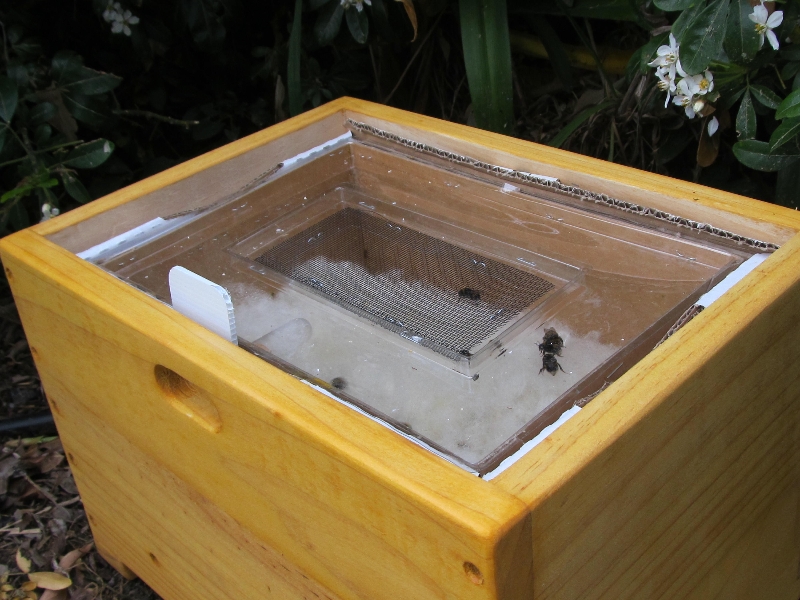The lucerne leafcutting bee Megachile rotundata was introduced to New Zealand from North America by me beginning in 1971 for management as a specialist pollinator of lucerne flowers for production of seed. A specialist pollinating bee was needed because although honey bees readily visit lucerne flowers, they collect mainly nectar and avoid `tripping’ a spring-loaded reproductive column which can deliver a debilitating punch to the soft-bodied bees. Consequently the flowers are not pollinated. The short-tongued bumble bee Bombus terrestris which has a more resistant body will readily trip the flowers, but there are rarely sufficient bumble bees to pollinate most of the flowers. Female lucerne leafcutting bees are more strongly built than honey bees, and will trip more than 10 flowers a minute as they collect pollen (and nectar) for their larvae.
Lucerne leafcutting bees were imported as overwintering prepupae (the mature larval form in cells), and adult bees were hatched in quarantine so all foreign insect enemies could be removed. Consequently our bees are free of all the pests that reduce their numbers in other parts of the world. However, and unfortunately for us, one native parasitic insect which normally attacks tube-nesting mason wasps and sometimes tube-nesting native bees will also attack leafcutting bees, but it can be controlled by storing the bee nests in a fridge right after nesting ceases by about early April, until placement back in the field by about early November.
The introduced leafcutting bees thrived through the 1980s and where we had sufficient numbers on flowering lucerne, large increases in seed yield resulted. However the disestablishment of the old Department of Scientific and Industrial Research in mid 1992 caused the collapse of our project, and without scientific and management support the leafcutting bee population collapsed. Additionally, grapes for wine began to take over former lucerne seed crops, and seed began to be imported, so the demand for pollinating bees fell.
Several years ago interest in leafcutting bees (and other species of bees) began increasing again because of the threats facing honey bees, and so efforts are being made to increase the numbers of leafcutting bees for wide distribution. Leafcutting bees can be valuable pollinators of a range of flowers, and because the females are not aggressive and the bees can be easily managed, they can be readily utilized by home gardeners and owners of small holdings for interest and fun.
Barry Donovan
Donovan Scientific Insect Research
Canterbury Agriculture and Science Centre
Lincoln.
18 September 2014.






